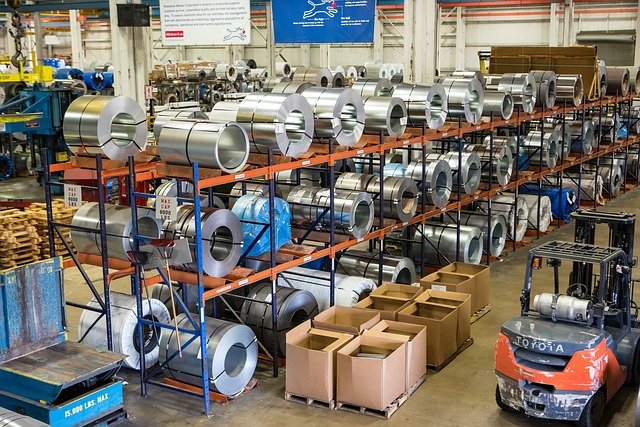Compliance mapping: aligning global standards with local operations
Compliance mapping connects international standards with the realities of on-the-ground operations, helping organizations translate legal, technical, and market requirements into actionable local procedures. Effective mapping reduces regulatory risk, streamlines supplychain decisions, and supports consistent production and procurement across jurisdictions while enabling faster responses to audits and inspections.

Compliance mapping is the process of translating global standards into local operational practice so that manufacturing plants, distribution centers, and procurement teams can meet both international requirements and domestic rules. It creates a clear trail from regulation to procedure, integrating elements of cybersecurity, sustainability, tariffs, and maintenance into daily workflows. When done well, compliance mapping reduces ambiguity for workers and managers, improves audit readiness, and supports consistent quality across locations without sacrificing local flexibility.
How does compliance affect manufacturing and production?
Manufacturing compliance requires reconciling international product standards, safety rules, and quality systems with local labor and environmental regulations. Production teams must interpret specifications so machinery settings, testing protocols, and documentation meet both sets of requirements. This influences process design, inspection schedules, and training programs. Practical mapping identifies which standards are mandatory versus recommended, prescribes local recordkeeping formats, and ensures production control points align with audit criteria. It also helps prioritize corrective actions that reduce downtime and maintain throughput while protecting worker safety and product integrity.
How does compliance shape supplychain and logistics?
Supplychain and logistics operations must reflect customs rules, documentation standards, and transport regulations that vary by country. Compliance mapping clarifies where supplier certifications, packing lists, and HS codes intersect with local import/export rules and tariffs. Logistics teams gain structured procedures for manifesting, bonded storage, and cross-border transfers. Mapping helps companies choose compliant routes and carriers, manage inventory allocation across jurisdictions, and reduce delays caused by mismatched paperwork. It further supports vendor audits and corrective action plans that strengthen supplier performance and traceability.
How can automation and maintenance support compliance?
Automation can enforce compliance by embedding standard operating procedures into control systems, workflows, and maintenance schedules. Mapping identifies which routine checks and calibrations must be automated—such as sensor validations or equipment lockout/tagout steps—to meet standard thresholds. Maintenance plans tied to compliance ensure records of repairs, parts replacement, and preventive tasks are retained in standardized formats. This reduces human error, shortens audit cycles, and limits unscheduled downtime. When maintenance data are integrated with production and quality systems, organizations can demonstrate consistent adherence to technical standards more efficiently.
How does sustainability and energy governance fit compliance?
Sustainability and energy standards require tracking emissions, waste, and resource use against both global frameworks and local environmental regulations. Compliance mapping translates high-level sustainability commitments into measurable actions—energy monitoring intervals, waste segregation practices, and supplier sustainability criteria—that local teams can implement. It also sets reporting boundaries so energy and emissions data align with statutory requirements and voluntary frameworks. This approach helps organizations reduce risk of noncompliance penalties, optimize energy efficiency, and support long-term resilience in production and logistics operations.
How to align procurement, inventory, and tariffs with standards?
Procurement and inventory management must reflect approved supplier lists, restricted material controls, and tariff classifications. Mapping ensures buying policies require vendor verification steps, regulatory checks for restricted substances, and traceability requirements for sensitive components. Inventory systems are configured to flag goods subject to specific tariffs or compliance obligations, enabling correct cost accounting and customs declarations. Standardized supplier contracts and procurement checklists derived from mapping reduce the risk of noncompliant purchases and improve visibility into cost and supply risks across locations.
How to manage cybersecurity, efficiency, and downtime risks?
Cybersecurity and operational resilience are integral to compliance mapping: digital controls, access management, and incident logging are often stipulated by standards for critical infrastructure and supplychain continuity. Mapping determines required security controls for manufacturing execution systems, inventory databases, and remote monitoring tools, ensuring data integrity for audits and investigations. It also links risk assessments to efficiency metrics and downtime protocols, so remediation steps are both compliant and operationally sensible. Clear escalation paths and documented recovery procedures enable consistent responses across facilities and reduce overall exposure.
Compliance mapping is a practical bridge between abstract global requirements and the operational realities of production, procurement, and logistics. By creating clear, localized procedures that reference international standards, organizations improve audit readiness, reduce supplychain interruptions, and align sustainability and cybersecurity efforts with day-to-day operations. Well-documented mapping provides a repeatable framework that supports continuous improvement and regulatory alignment as standards and local rules evolve.





